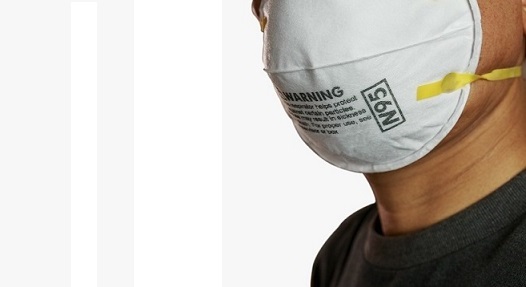


According to the CDC, increased BMI and obesity is a "common, serious, and costly disease" in the US, affecting 42.4% of the adult population.
Following the science, I have expressed deep concerns about the general use of having the general public and employees use N95 masks regularly. Never mind the "single-use" component; numerous scientific studies exist on the efficacy and dangers of long-term N95 use. I call on all safety, industrial hygiene, public health, and doctors to read the studies and recommend appropriately (perhaps against) the general use of N95 to prevent the spread of COVID-19. For those with pre-existing health conditions (including obesity), N95 usage (at work combined with away from work) could lead to several dangerous outcomes.
Let's review comments from three studies:
"The use of N95 respirators compared with surgical masks is not associated with a lower risk of laboratory‐confirmed influenza. It suggests that N95 respirators should not be recommended for general public and nonhigh‐risk medical staff those are not in close contact with influenza patients or suspected patients." (1)
"Wearing an N95 for an entire 12-hour shift had statistically significant negative effects on some physiologic measures and subjective symptoms. Over time, nurses' CO2 levels became significantly elevated, from a statistical standpoint, compared with beginning-of-shift baseline measures; perceived exertion; perceived shortness of air; and complaints of headache, lightheadedness, and difficulty communicating also increased over time. CO2 levels increased from a baseline average of 32.4 at the beginning of the shift to 41.0 at the end of each shift." (2)
"Nurses having a higher BMI had statistically significant negative effects on some physiologic measures and subjective symptoms than nurses with lower BMIs." Those with a higher BMI had lower O2 levels and higher heart rates while wearing either type of respiratory protection (an N95 alone or with a mask). Heavier individuals also reported significantly more negative effects on subjective symptoms than those who weighed less. Those with higher BMIs reported higher perceived exertion, perceived shortness of breath, perceived discomfort, complaints of feeling warm while wearing the N95, headaches, lightheadedness, visual challenges, and impeded communication than those with lower BMIs. "Nurses with higher BMIs also performed one of the most potentially high-risk noncompliant behaviors in terms of cross contamination than nurses with lower BMIs: touching the N95." (2)
"The pooled results of randomized trials did not show a clear reduction in respiratory viral infection with the use of medical/surgical masks during seasonal influenza. There were no clear differences between the use of medical/surgical masks compared with N95/P2 respirators in healthcare workers when used in routine care to reduce respiratory viral infection." (3)
1) https://www.ncbi.nlm.nih.gov/pmc/articles/PMC7228345/
2) https://www.ncbi.nlm.nih.gov/pmc/articles/PMC7132714/
3) https://pubmed.ncbi.nlm.nih.gov/33215698/




